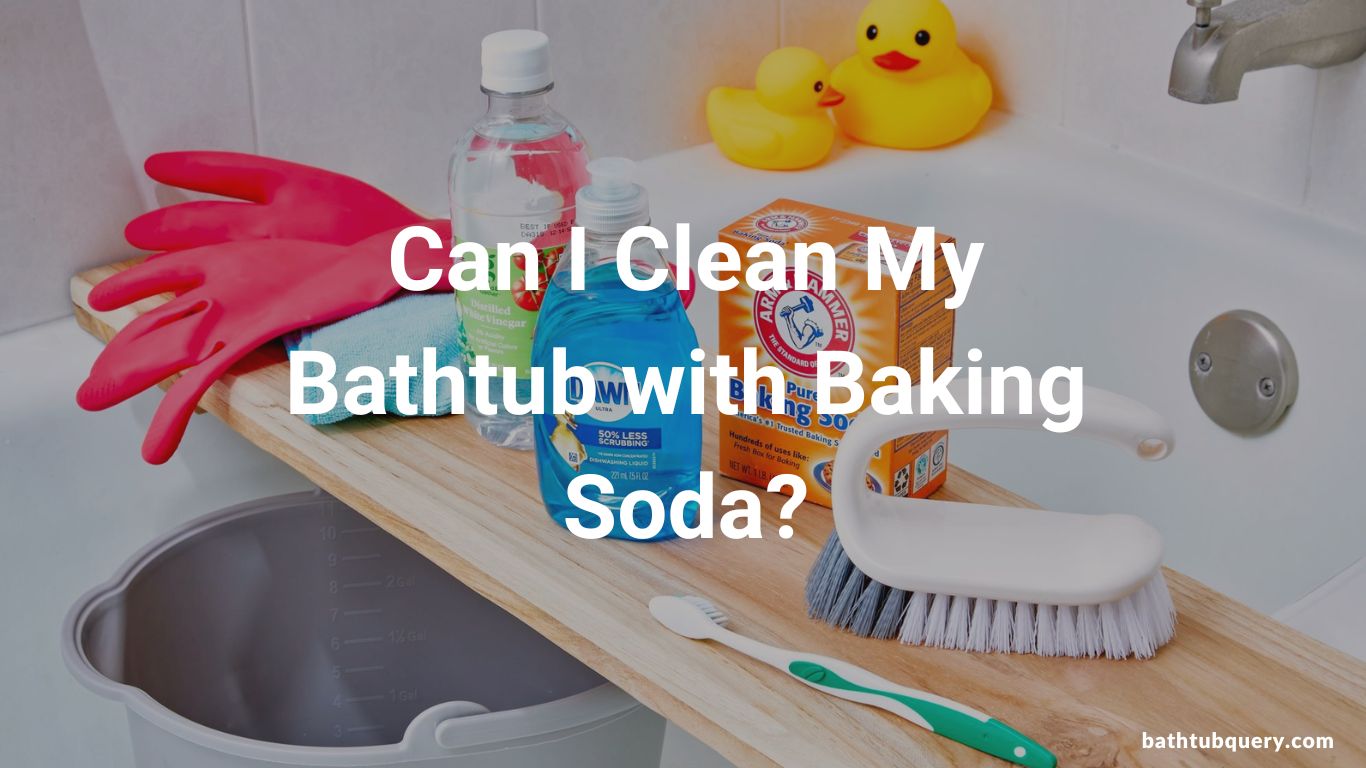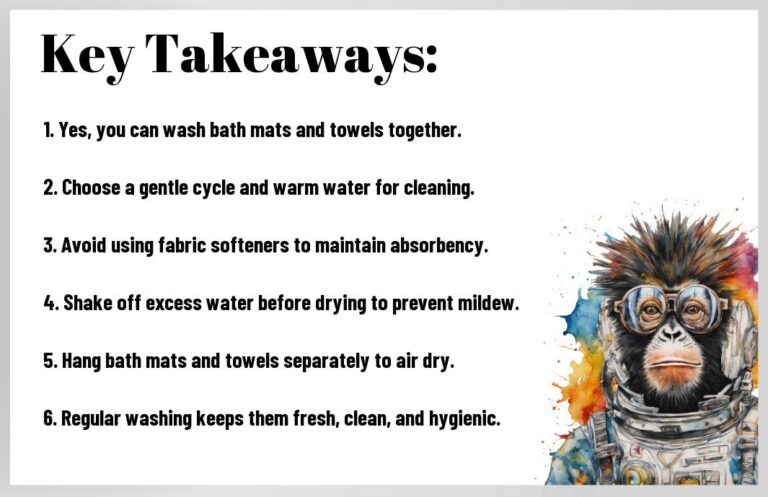Can I Clean My Bathtub with Baking Soda? Dazzle Your Bathtub
The question, “Can I clean my bathtub with baking soda?” is one that many homeowners ponder over. This eco-friendly, wallet-friendly, and readily available household item is often touted for its cleaning prowess. Let’s dive into the discussion on how, and why, baking soda can be a cleaning superhero for your bathtub.
Can I Clean My Bathtub with Baking Soda?
Yes! You can definitely clean your bathtub with baking soda. It’s a simple and natural cleaning solution. Just sprinkle baking soda on the dirty surfaces, add warm water, and after a couple of minutes, start scrubbing. For tougher stains, you can boost the cleaning power by mixing baking soda with vinegar or ammonia.
Why Baking Soda?
- Eco-Friendly: Baking soda is biodegradable and free of harsh chemicals, making it an excellent choice for environmentally-conscious homeowners.
- Non-Abrasive: Its mild abrasiveness gently scrubs away stains without scratching the tub surface.
- Odor Absorber: As a bonus, baking soda also works as an excellent deodorizer, leaving your bathroom smelling fresh and clean.
- Cost-Effective: It’s a common household item that is budget-friendly compared to most commercial cleaners.
How to Clean Your Bathtub with Baking Soda?
Now, let’s get into the ‘how’ of cleaning your bathtub with baking soda.
- Wet the Bathtub: Start by wetting the surface of your bathtub with warm water.
- Sprinkle Baking Soda: Generously sprinkle baking soda over the entire tub.
- Scrub: Using a non-abrasive sponge or scrub brush, scrub the surface thoroughly.
- Rinse: Once you’ve scrubbed the entire tub, rinse off the residue with warm water.
- Dry: Finally, dry the tub with a clean cloth to prevent water spots.
Taking it to the Next Level with Vinegar
To boost the cleaning power, pair baking soda with white vinegar, a natural disinfectant. When combined, these two create a fizzy reaction that helps break down tough stains.
- Apply Baking Soda: Start by applying baking soda as mentioned above.
- Spray Vinegar: Then, spray white vinegar over the baking soda and allow the mixture to fizz.
- Wait: Let the mixture sit for about 15 minutes to break down the grime.
- Scrub and Rinse: Scrub the tub as usual and rinse it clean.
Why Use Baking Soda to Clean Your Bathtub?
There are several key reasons why baking soda is an excellent choice for cleaning bathtubs:
A Natural, Non-Toxic Cleaner
First, baking soda is completely natural and safe for you and your family. Unlike harsh chemical cleaners, baking soda won’t irritate eyes or skin and won’t release toxic fumes. It’s a gentle cleaner that gets the job done without risky chemicals. Both conventional bathtubs and natural material tubs can be cleaned safely with this non-toxic product.
Effective Grime and Stain Remover
In addition to being natural, baking soda is highly effective at breaking down dirt, oil, residue, soap film, and hard water or limescale deposits on bathtubs. The slightly gritty texture of baking soda serves as a gentle scrubbing powder that lifts away grime when you rub it into a paste.
Deodorizing Abilities
After cleaning with baking soda, you’ll notice it leaves your bathtub fresh and odor-free. Baking soda absorbs and neutralizes stubborn tub odors like mildew and mold. Its natural deodorizing properties give your bathtub a clean smell after scrubbing away dirty residue.
Inexpensive and Versatile
Nearly every home has a box of baking soda in the kitchen for cooking and baking purposes. Since it’s already on hand, it offers an inexpensive and versatile way to keep your bathroom clean. After tackling the tub, baking soda can be used all around the bathroom on countertops, floors, sinks, tiles, and more.
How Does Baking Soda Work to Clean Bathtubs?
The simple chemical composition of baking soda is what gives it such effective cleaning power. Here’s a quick look at why it works so well on tubs:
Abrasive Texture
Baking soda has a gritty, coarse texture that acts as a gentle scouring powder. This abrasive quality helps loosen and lift away built-up gunk like soap scum, body oils, and water deposits. When you rub baking soda into a paste, its scratchy texture breaks down residue so it can be rinsed away.
Alkaline Composition
Baking soda has an alkaline pH of 8-9. This makes it a mild base that dissolves grime like soap scum and mineral deposits, which tend to be more acidic. It also neutralizes oily residue. Allowing baking soda to sit for a few minutes before scrubbing enables the alkaline components to start breaking down grunge.
Odor Neutralization
The unique chemical structure of sodium bicarbonate enables baking soda to absorb odors rather than cover them up with perfumes. When it comes into contact with acidic odor molecules, it neutralizes them, leaving a clean scent.
So in short, baking soda tackles bathtub dirt and odors thanks to its abrasive texture, alkaline pH, and natural deodorizing abilities.
Is Baking Soda Safe for Cleaning Bathtubs?
For most standard bathtubs, baking soda is completely safe for effectively cleaning the tub’s surface. Here is a look at the types of tubs it can be used to clean:
- Enamel bathtubs
- Acrylic, fiberglass or plastic tubs
- Porcelain tubs
- Ceramic tile tubs or surrounds
- Cultured marble tubs
- Granite composite sinks and tubs
- Cast iron or steel with enamel coating
The slightly abrasive texture of baking soda is strong enough to scrub away grime but gentle enough that it won’t scratch these surfaces. It’s even safe for use on most composite materials found in shower walls and tub surrounds.
Always spot test a small, inconspicuous area first if you are unsure whether baking soda is safe for cleaning a tub. Check to see if the surface becomes scratched or damaged after testing baking soda.
Are There Any Surfaces Baking Soda Should Not Be Used On?
While it’s safe for most tubs, there are a few materials that should not be cleaned with baking soda:
- Polished metal or chrome – can scratch
- Marble, travertine or other polished natural stone – can etch surface
- Acrylic without enamel or gel coat – can dull finish
- Unsealed terrazzo, cement or concrete – can erode
If you have a tub made of marble, terrazzo or another delicate material, check the manufacturer’s care instructions before using baking soda, or test a small area first. For polished metal fixtures, use a gentler cleaner without abrasives.
Key Takeaways
Baking soda is a safe, eco-friendly, and cost-effective way to clean your bathtub. The process is simple: wet the tub, apply baking soda, scrub, rinse, and dry. For added cleaning power, use white vinegar with baking soda.
FAQs
Is baking soda safe for all bathtub materials?
Yes, baking soda is safe for all bathtub materials, including acrylic, porcelain, and enamel.
Can I use baking soda to clean the bathroom tiles?
Yes, baking soda can effectively clean bathroom tiles and grout.
How often should I clean my bathtub with baking soda?
For regular maintenance, you should clean your bathtub with baking soda once a week.
Can I leave baking soda on my bathtub overnight?
While it’s not harmful, it’s unnecessary. A few minutes should suffice to loosen dirt and grime.
Does the vinegar need to be white vinegar?
White vinegar is recommended because of its disinfectant properties and because it won’t discolor your tub.
Related articles:
- How To Clean A Dirty Bathtub Fast?
- How To Clean Bathtub with Baking Soda?
- How to Clean a Dirty Bathtub Without Scrubbing?
- How to Clean Your Bathtub Without Bending Over?
- Bathtub Cleaning Hacks for a Sparkling Tub

Amanda has been designing and installing bathtubs for over 15 years. She first got interested in the bathtub industry while working as an interior designer right after college. During her years as a designer, Amanda was frustrated by the lack of high-quality, unique bathtub options for her clients. This passion led her to start her own bathtub website in 2009.







